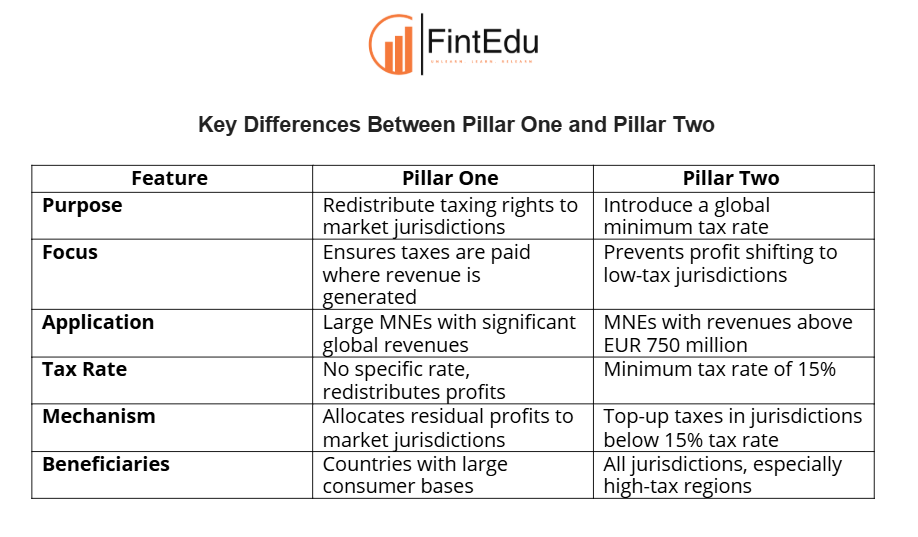LISTEN TO THIS ARTICLE
In an increasingly digital and interconnected world, traditional tax rules struggle to keep pace with the global nature of businesses. The Organization for Economic Co-operation and Development (OECD) recognized this challenge and proposed a two-pillar solution to address tax challenges arising from the digitalization of the economy. Let’s understand what Pillar One and Pillar Two means.
Pillar One: Redefining Tax Allocation
Pillar One establishes new rules for allocating a portion of residual profits from multinational enterprises to the countries where their customers or users are located. This applies regardless of whether the company has a physical presence in those countries.
- Scope: Pillar One applies to large MNEs with global revenues exceeding a defined threshold (e.g., EUR 20 billion) and profitability above a certain level.
- Profit Allocation: A portion of residual profit (profits exceeding a standard return) is allocated to market jurisdictions based on sales.
- Objective: Address the tax challenges posed by highly digitalized businesses that generate significant revenue in countries without maintaining a physical presence.
- Example: A global tech company earns substantial revenue from users in Country A through digital services. Despite no physical office in Country A, a share of its profit is taxed there.
Pillar Two: Establishing a Global Minimum Tax
Pillar Two aims to ensure that large MNEs pay a minimum level of tax globally, regardless of where they operate, by introducing a global minimum tax rate.
Definition:
Pillar Two creates a framework for a global minimum effective corporate tax rate (set at 15%), ensuring that MNEs pay at least this rate in every jurisdiction where they operate. If they pay less, other countries can collect the difference through a top-up tax.
- Scope: Applies to MNEs with annual revenues above a threshold (e.g., EUR 750 million).
- Minimum Tax Rate: Sets a global minimum effective tax rate of 15%.
- Top-Up Mechanism: If an MNE pays less than 15% tax in a jurisdiction, other countries can impose additional taxes to meet the minimum.
- Objective: Prevent profit shifting to low-tax jurisdictions and ensure fair taxation.
- Example: If a company shifts profits to Country B with a 5% tax rate, another country (e.g., the headquarters’ country) collects the additional 10%.
Conclusion
OECD’s Pillar One and Pillar Two frameworks represent a significant shift in global taxation policies. While Pillar One focuses on fairness by taxing companies where their consumers are located, Pillar Two ensures a level playing field by setting a floor on tax rates globally. Together, they aim to create a more equitable and sustainable tax environment.
Contributor
Related Posts

@@PLUGINFILE@@/ttsmaker-file-2025-12-17-12-45-24.mp3Listen to this ArticleGold trading is a cornerst...
Read More
UAE, 15 December, 2025: The UAE has announced amendments to its corporate tax law to clarify ...
Read More
UAE, 15 December, 2025: The Ministry of Finance has issued Cabinet Decision No. (197) of 2025...
Read More
